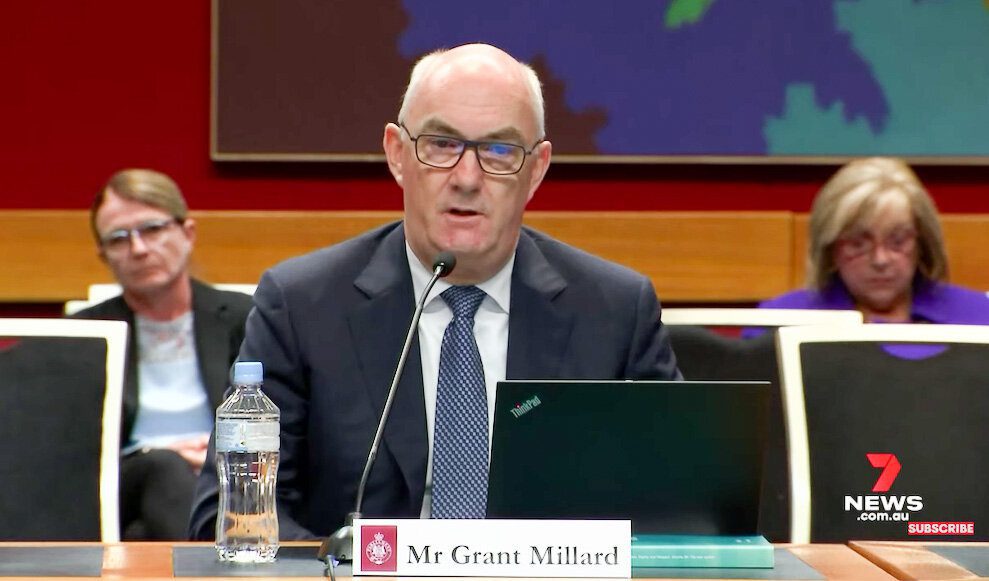- Over 125 jobs to go in Anglicare “restructure”
- Cuts of “$7m–$7.5m” annually from aged care
- Newmarch House nurses among retrenched
- CEO “uncomfortable” with the cuts but says situation “dire”
- Yet claims of financial woe false, investigations show
- Awash with cash, bumper earnings, assets over $2 billion
EXCLUSIVE
Aged care giant Anglicare Sydney has misled a government inquiry by claiming to be in serious financial difficulty – when it’s actually awash with cash, notching up record revenues, and is one of the nation’s richest organisations holding well over $2 billion in assets.
The revelations come as Anglicare Sydney has lodged new information with the NSW parliamentary inquiry into aged care that reveals its “unavoidable” restructuring will see at least 125 jobs slashed from its 23 aged care homes.
Among those already retrenched are at least two nurses – and an unknown number of other “care workers” – from Anglicare’s infamous Newmarch House, where 19 residents died after a major Covid-19 outbreak last year.
In the document, which has not been previously reported, Anglicare Sydney CEO Grant Millard says the Anglican Church-owned group is seeking to cut “between $7 million and $7.5m annually” from staffing in a “targeted savings” plan.
That’s despite Anglicare Sydney receiving an all-time record $241.3m from taxpayers last financial year – up from $233.6m the year before – while at same time seeing a fall in resident numbers “across the portfolio”.
The heavily embattled Millard – who last week announced he would “retire” – has provided the information in response to questions he took “on notice” at parliamentary hearings in March.
The NSW parliamentary inquiry is examining the adequacy of nurse staffing levels at aged care facilities, and associated aspects the Newmarch House tragedy, which as Anglicare CEO Millard was responsible for.
After initially “declining” to attend, Millard made headlines when he appeared on March 29 and under questioning confirmed that Anglicare was in the process of cutting jobs.
That’s despite that NSW parliamentary inquiry, the Royal Commission into Aged Care Quality and Safety, and the independent inquiry solely into Newmarch House, all warning of a dire shortage of aged care staff.
The Royal Commission found one-in-three people living in aged care in Australia experience neglect, physical or emotional abuse.
Millard, a corporate lawyer and former international tax haven accountant, defended the cuts, though he confirmed they would be across all of the group’s 23 aged care homes.
Those homes, all in and around Sydney, are part of Anglican Church’s “Archdiocese of Sydney”.
Millard said Anglicare’s business was “ unsustainable” in its current structure, that the situation was “dire”, and that laying off workers was “an issue of financial sustainability and viability”.
“If you ask whether I am comfortable with reducing the number of hours, no I am not,” Millard told the inquiry.
“That is not the way we want to go, but if we want to stay viable – able to operate – there is very little else.”
“That is not the way we want to go, but if we want to stay viable – able to operate – there is very little else” — Grant Millard
However investigations by The Klaxon reveal Anglicare is in a very different financial position to the one it’s portraying.
Its 2020 financial reports show it delivered a bumper earnings of $46.3 million, held shares, bonds and other liquid investments of $379.4m – and was sitting on a monster cash pile of $48.1m, up from $34m the year before.
In 2020 it also ramped-up a massive Sydney land acquisition and property development play – committing $290.2m to the “purchase of land and the construction of buildings” in just 12 months.
On the back of many years of extensive taxpayer funding, Anglicare has built up vast assets.
At June 30 last year its total assets had ballooned to a massive $2.035 billion.
That was up from $1.86bn the year before.
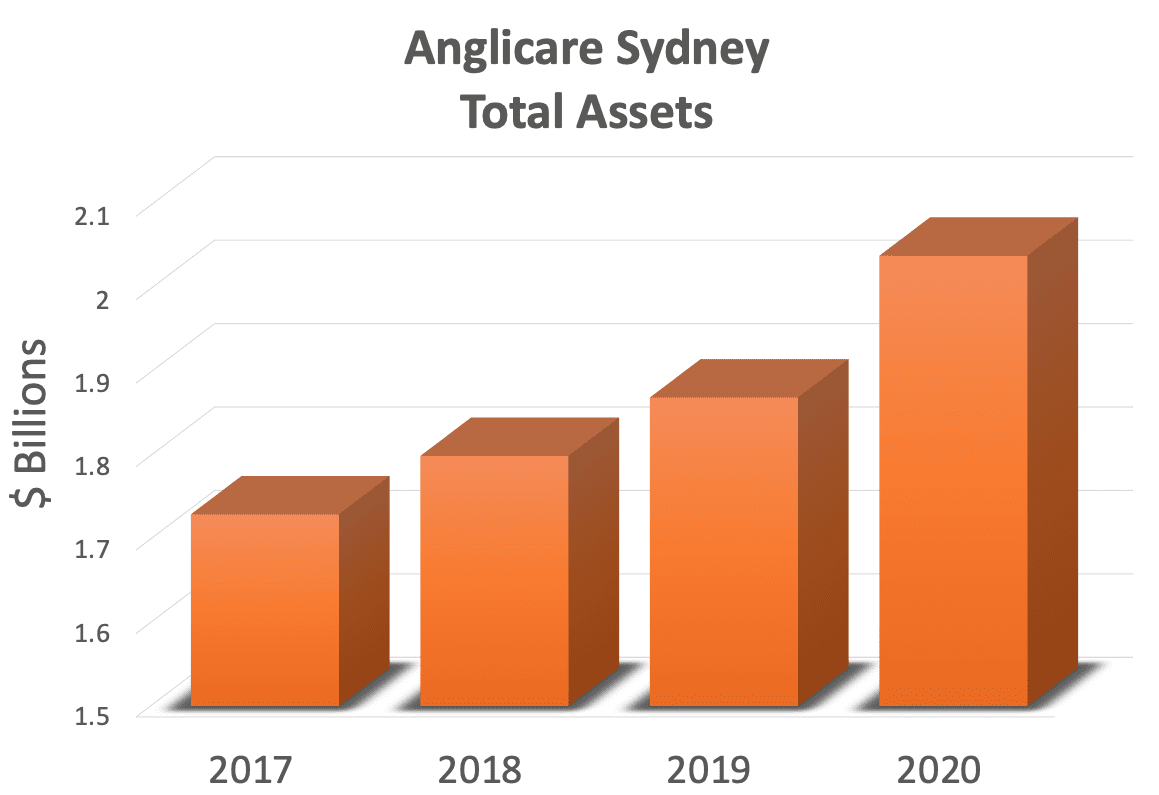
Anglicare Sydney’s total assets have exploded in recent years on the back of huge taxpayer subsidies. Source: Anglicare Sydney. Graphic: The Klaxon
At June 30 Anglicare Sydney had a massive $207m in “accumulated funds”.
Those funds have, overwhelmingly, been “accumulated” from taxpayers.
For example, over three-quarters of Anglicare’s total revenue last financial year was the $241.3m it received from the government.
(The remainder comes from residents, much of it through the redirection of their aged pensions to Anglicare).
Anglicare’s $207m in “accumulated funds” is the equivalent of 29 years of the annual savings (of “$7m-$7.5m”) that it plans to make under its widespread job cuts.
(Just the $48m that Anglicare has sitting in “cash” would be enough to keep the 125-plus staff facing retrenchment in work for almost seven years).
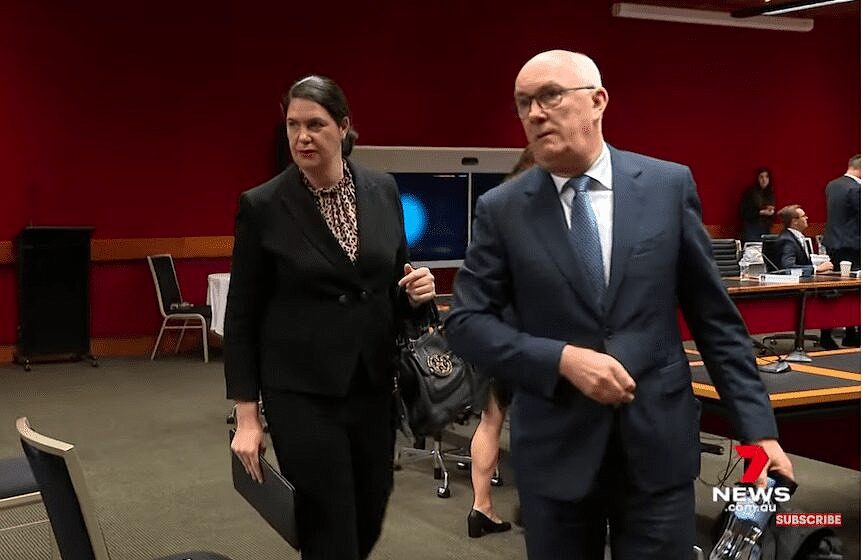
Anglicare CEO Grant Millard leaves NSW parliamentary hearing on May 29. Source: 7 News
On notice
At the NSW parliamentary inquiry Millard was asked why Anglicare was cutting jobs when the Royal Commission into aged care, as well as the independent inquiry into Newmarch House, had each identified low staffing levels as a matter of serious concern.
The royal commission found the system was “understaffed, and the workforce underpaid and under-trained.”
The Newmarch House inquiry, commissioned by the Federal Government, said residents’ families had “consistently advocated” for more and better trained staff “supporting improved delivery of care to residents”.
At the NSW parliamentary inquiry on May 29 Millard how it could be the case that, given it was cutting staff, Anglicare was “overstaffed” or “had a surplus of hours being performed by your workforce”?
Millard said he did not claim the homes were “overstaffed”, dodged a question about whether he thought care levels would suffer, and said he was not “comfortable” with making the cuts.
———————————————————
More in our Anglicare series:
Anglicare’s scandal-ridden CEO to depart
“SHOCKING”: Zero action over Anglicare tax haven CEO
Newmarch House CEO tied to global tax scandal
———————————————————
But it was “an issue of financial sustainability and viability”.
“Our organisation last year – currently we are operating at a loss of circa $20 million per annum for residential aged care. That is not sustainable,” Millard said.
Yet neither Anglicare’s 2020 Financial Review, or its 2020 Annual Review, makes any reference to that $20m figure.
Anglicare’s annual report states that its receipts from government increased from $233.6m to $241.3m last financial year, yet Anglicare had “experienced a fall in occupancy levels across the portfolio”, in the period.
Millard and Anglicare’s chair Greg Hammond, also a corporate lawyer, did not respond to detailed questions put to them last week regarding the alleged “circa $20m” annual loss and the major differences between Anglicare’s actual financial position and the one it’s putting forward publicly.
Also refusing to comment were Anglicare’s board members, including former Leighton Contractors CFO Peter Hicks; Qantas Super CEO Michael Clancy; former PriceWaterHouseCoopers partner Martyn Mitchell; and Urbis consulting senior executive Linda Kurti.
Federal aged care mister Richard Colbeck has repeatedly refused to respond when contacted for comment by The Klaxon regarding the Anglicare scandal over the past nine months.
The claims from Anglicare that it is financially struggling – when it is in fact awash with taxpayer cash – raises serious questions for the entire sector, given Anglicare says other major operators are in the same boat.
“This position is multiplied across the sector. It is dire,” Millard told the inquiry.
The major aged care operators are continuing to heavily lobby the Federal Government for more funds, on top of a $17.7 billion boost announced in the May budget.
The Federal Coalition has responded that in order to give the sector more money it is considering raising taxes, including considering introducing a new Medicare-style income tax levy on workers.
Millard told the NSW parliamentary inquiry the government was “on notice”.
“The government is on notice and they need to respond with significant funding,” he said.
“The government is on notice and they need to respond with significant funding” — Grant Millard
Fair Value
Anglicare’s total assets surged from $1.47bn in 2016 to $2.035bn in 2020.
That’s $566m in additional assets in four years, representing an average annual growth rate of over 9.5%.
Yet even Anglicare’s whopping total assets figure of $2.035bn is vastly understated, our investigations reveal.
For reasons that it does not explain, Anglicare does not record its land assets at “fair value”, instead it records them at the price it paid to originally buy the land.
““ACS (Anglicare) does not revalue its property assets to fair value” ”
— Anglicare 2020 Financial Report
That means vast land appreciation on its aged care homes, all in and around Sydney, most of which it has owned for many years, are not included in the $2.035bn figure.
Anglicare’s 23 aged care homes include its facility at Beecroft in Sydney’s north, which it has owned since 1958; a 116-resident, nine-level tower with harbour views at Rushcutters Bay in inner-Sydney which it refurbished almost a decade ago; and five aged care facilities at Castle Hill in Sydney’s west, where it opened its first facility in the 1950s.
Anglicare’s own accounts, audited by Ernst & Young partner John Robinson, specifically state this accounting practice by Anglicare means that Anglicare’s “capacity to support current and future operations” is understated.
The company uses a number of registered trading names, including “Anglicare” and “Anglicare Sydney” but its legal title is Anglican Community Services, or ACS.
“ACS (Anglicare) does not revalue its property assets to fair value,” its 2020 financial report states.
“Accordingly, the net asset value in these financial statements understates ACS’s financial resources and its capacity to support current and future operations.”
““These financial statements understate (Anglicare’s) financial resources and its capacity to support current and future operations” ”
— Anglicare 2020 Financial Report
(For reasons not disclosed, Anglicare’s 2020 Financial Review does not appear on the group’s webpage along with its other financials. We have posted the 51-page document below).
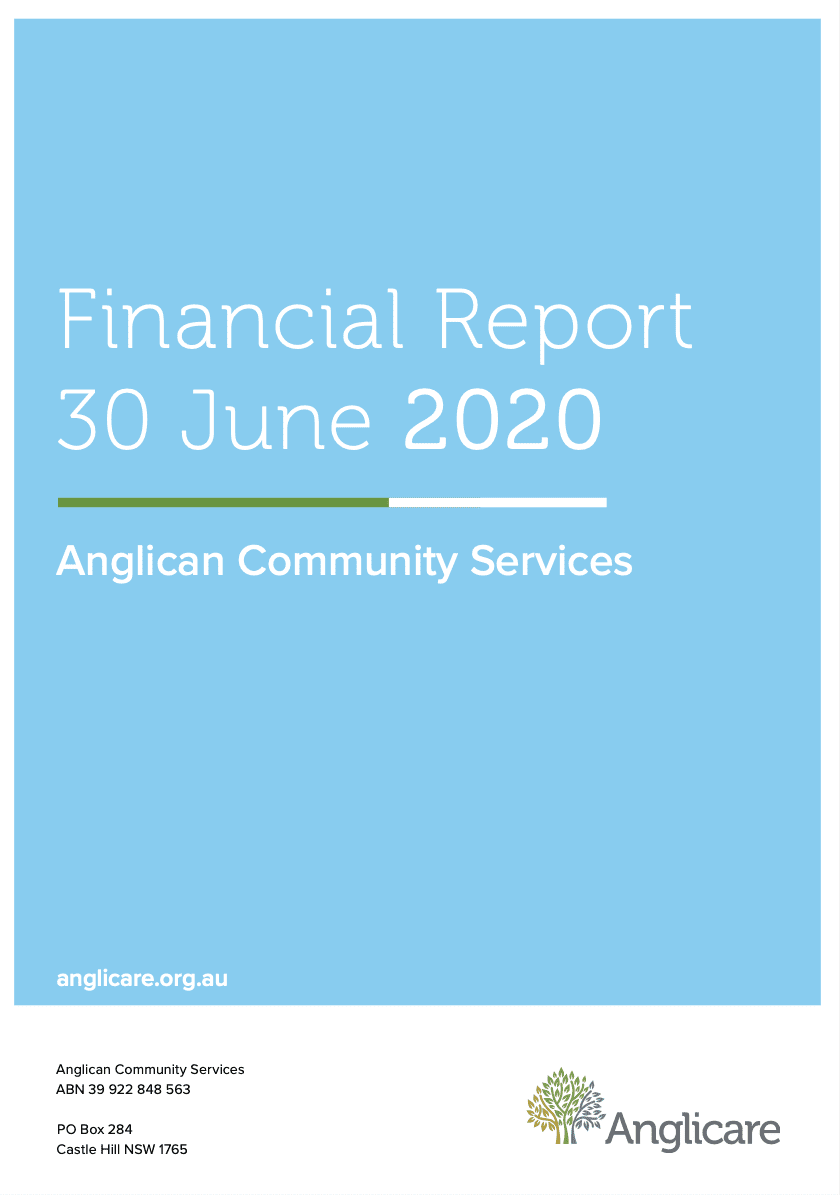
Jail threat
Anglicare CEO Grant Millard appeared before the inquiry on March 29 under threat of imprisonment, after earlier “declining” to do so.
The transcript shows Millard appeared “under summons”, and was legally required to answer questions “under section 11 of the Parliamentary Evidence Act 1901”.
(The act states that if a person refuses to answer questions they can be sent to jail for up to “one calendar month” for contempt of parliament.)
“If you ask whether I am comfortable with reducing the number of hours, no I am not” — Grant Millard
At the March 29 hearing, NSW ALP MP Daniel Mookhey asked Millard: “Are you currently embarking upon a process of reducing hours across your business in terms of your staff, by any chance?”
Millard responded: “We have a matter before the Fair Work Commission at the moment where we have looked to change the roster structure…so, yes, we have been looking to reduce hours”.
In fact, the HSU had taken Anglicare to the Fair Work Commission two weeks earlier, on March 12, having learned of the redundancies and that Anglicare had allegedly been illegally tricking employees into accepting the cuts.
“HSU members from across the organisation (Anglicare) have reported feeling distressed and being ill-informed about there rights as Anglicare has rolled out these changes,” HSU wrote to members on March 12.
Anglicare had allegedly failed to engage in proper consultation and had instead been sending letters to staff implying that changes to their work contracts would “occur without your consent”.
The Fair Work Commission was highly-damning of Anglicare.
Commissioner Leigh Johns determined that Anglicare failed to act “fairly, honestly, decently, candidly” in the redundancy process by failing to inform workers they had the right to refuse the cuts.
Earlier this month Health Minister Greg Hunt described the new funding for aged care in the budget as the “largest package in Australia’s history”.
The package includes $3.6bn to provide aged care home operators with an additional “$10 per day” per resident.
That money is supposed to go toward providing more staff and better food to residents.
Based on Anglicare’s 2364 residential aged care places, it will receive additional funding of $8.6 million.
On Friday HSU spokesman Luke Lucchinelli told The Klaxon that Anglicare had been forced to withdraw its misleading retrenchment letter to staff, although Anglicare was pushing ahead with the job cuts.
Questions on Notice
Anglicare’s 2020 accounts show it has 4121 employees, including “full-time, part-time and casual” workers.
Millard told the NSW inquiry said “vast majority” of Anglicare’s “about 4000” staff were directed to the “primary purpose of aged care”.
Regarding the make-up, Millard said he was unsure how many registered nurses and other “care workers” that Anglicare employed, or how much money Anglicare was looking to save under the staff cuts, but took the questions (among others) on notice.
———————————————————
More reports in The Klaxon’s Anglicare series:
Anglicare tax haven CEO: The Luxembourg Files
Hire more “messengers”: Anglicare silent but PR overhaul
Millard’s Manor: Meet tax haven CEO’s tax haven HQ
———————————————————
In his responses, Millard says Anglicare employs a total of 280 registered nurses in aged care, and 1,370 “care workers”.
Care workers were paid an average of $25.05 an hour, nurses were paid an average of $39.38 an hour, and staff generally worked 38 hours a week, he reports.
That translates to an average full-time salary of $49,500 a year for care workers and $77,815 for nurses.
In his response Millard does not put a number on how many jobs Anglicare planned to cut, other than that it aimed to cut wages by “$7m-$7.5m” a year.
That equates to about 145 full-time aged care workers, or over 90 full-time nurses.
Millard told the inquiry the cuts were “not really focused on direct care delivery” but were “more in operation matters”, such as a “reduction in servery staff”.
However numerous sources have told The Klaxon that that is incorrect and that many nurses and care workers are among those losing their jobs.
Millard’s claims are also rejected by HSU which says the cuts are “across the organisation”
In his written response, Millard also appears to contradict his earlier position, conforming that of the redundancies made already, “2 RNs (resident nurses) work at Newmarch House”.
Millard does not provide any further information about the cuts, such as the total number of workers, or the number of “care workers”, at Newmarch House that have been made redundant.
The estimated job losses of 125-plus are substantially higher if factoring part-time positions.
Tax Haven CEO “retires”
Last week Anglicare announced Millard would be “retiring” as CEO.
Chairman Hammond did not respond when asked whether that Millard would be leaving before his current term expired – or what Millard’s current term was.
On Wednesday Anglicare posted a statement to its website saying Millard had “expressed his desire to retire” and that he would leave “towards the end” of his contract.
“(Millard’s) humility, compassion, and commitment to serving our clients have guided Anglicare Sydney through some bountiful times and also some challenging times,” Hammond is quoted as saying.
Millard could remain in the position for almost a year, with Anglicare Sydney saying he would be replaced “early next year”.
On September 4 The Klaxon revealed that before joining Anglicare Millard had run international tax affairs at a global arm of confirmed tax cheat Coca-Cola.
During that period Coca-Cola was “aggressively avoiding income tax payments”, depriving governments of billions of dollars that could otherwise be used to “fund health and social services”, found a report by Jason Ward, principal analyst at the Centre for International Corporate Tax Accountability and Research (CICTAR).
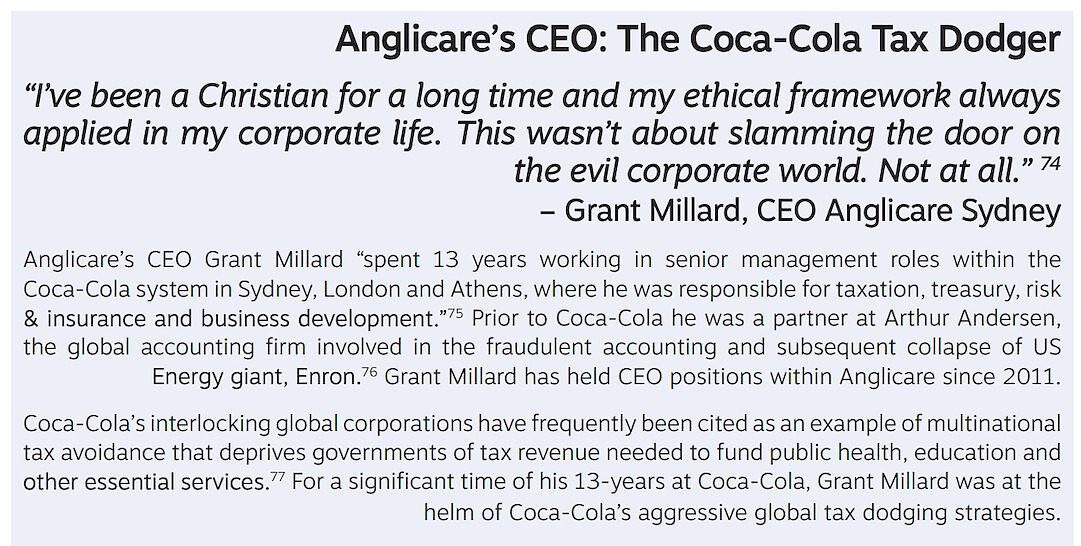
Part of CICTAR’s report regarding Grant Millard. Source:CICTAR
The Klaxon subsequently obtained a series of documents proving Millard had run a string of “shell” companies in notorious tax haven of Luxembourg (among other tax havens), despite the bottling giant’s own accounts revealing it had no actual operations there.
Hours after The Klaxon broke the story about Millard’s tax haven past, on September 4 last year, lawyers for Millard issued Ward, The Klaxon, and this reporter personally, with serious legal action.
That included threatening an “injunction”, “costs”, and demanding an “urgent takedown” of the article.
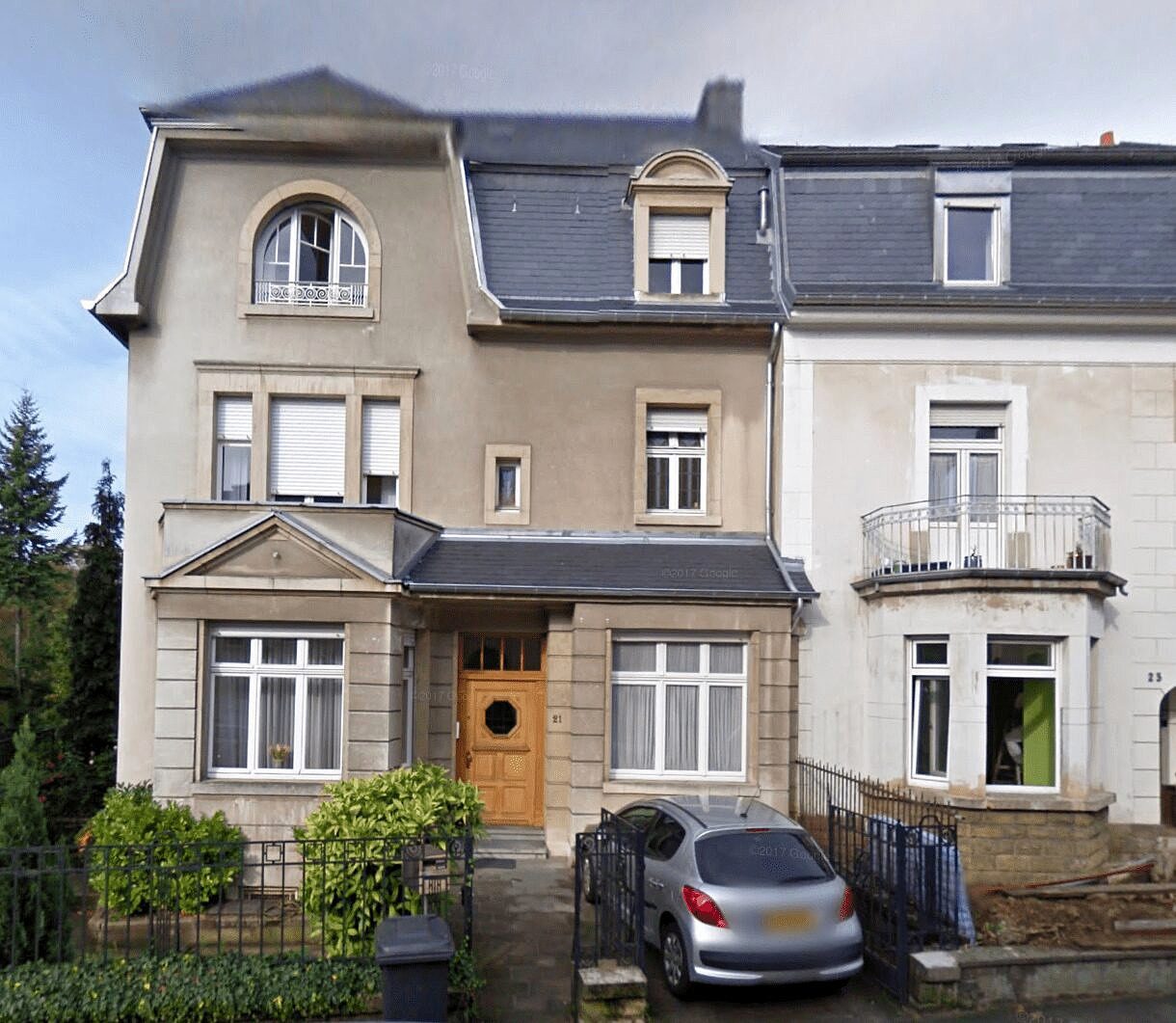
Millard’s Manor: “Deep in the tiny, landlocked European tax haven of Luxembourg a three-storey house sits on a leafy suburban street. In the front driveway is a modest grey hatchback…” Read the full story here.
The Klaxon refused. We do not consider the article, or any others we have published on Anglicare since, to be defamatory as they report the truth. They are also very much in the public interest.
Last month The Klaxon reported that neither Anglicare Sydney’s board or the Federal Government – Anglicare’s biggest funder – had taken any action whatsoever regarding the revelations of Millard’s tax haven past.
The final report into the Newmarch House disaster was published in August last year.
Its authors, Professor Lyn Gilbert and Adjunct Professor Alan Lilly, say they held discussions with Anglicare Sydney’s “CEO and Board of Directors” who had “confirmed their commitment to reflect and learn from the COVID-19 outbreak at Newmarch House”.
“In turn, this will drive further organisation-wide improvements in leadership, clinical governance, care and service delivery,” they write.
Coming soon: Part Two – How Anglicare Sydney used accounting manoeuvres to make out it was struggling when it was actually thriving, mercilessly feasting on taxpayer funds.
Help us get the truth out from as little as $10/month.
Unleash the excitement of playing your favorite casino games from the comfort of your own home or on the go. With real money online casinos in South Africa, the possibilities are endless. Whether you’re into classic slots, progressive jackpots, or live dealer games, you’ll find it all at your fingertips. Join the millions of players enjoying the thrill of real money gambling and see if today is your lucky day!
The need for fearless, independent media has never been greater. Journalism is on its knees – and the media landscape is riddled with vested interests. Please consider subscribing for as little as $10 a month to help us keep holding the powerful to account.


